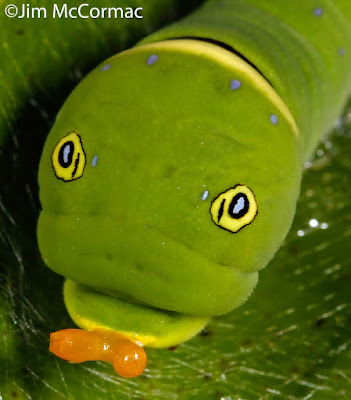On July 15 - prime time for prairies! - Debbie DiCarlo and I are leading a workshop that will visit a large prairie, and an interesting prairie fen. Subjects will abound, and it will be a particularly good chance to shoot fascinating macro subjects. We've got a few spaces left, and would love to have you. Details and registration info are RIGHT HERE.
We'll see one of the botanical prairie stars, the royal catchfly, Silene regia, but not just any old catchfly. This is a rare salmon-pink form, and it is particularly photogenic.
Here's the typical form of royal catchfly, and these towering members of the pink family should be in peak bloom on July 15. They are ruby-throated hummingbird magnets - the hummers are their primary pollinator - and the prairie we'll visit is loaded with catchflies, and hummingbirds.
Prime time in the prairies means lots of cool bugs, including scores of butterflies. This is a common wood-nymph, but it's by no means the only species of butterfly we will see. Again, workshop details are FOUND HERE.
Complete details and registration info can be found RIGHT HERE.
Late summer and early fall brings a riot of colorful wildflowers to Shawnee and vicinity, including this species, the stiff-leaved aster, Ionactis linariifolius. It may be the prettiest of the aster crowd, and that's saying a lot. A great many other interesting plants will also be in bloom.
Late August/early September is also peak season for caterpillars, a subject that perhaps not many photographers dwell upon, much. I don't know why. The larvae of butterflies and moths are tubular objets de' art and well worthy of framing in any camera. There are special tactics for finding such fare, but your narrator knows some of the tricks.
The one above is a crowned slug, Isa textua, the amazing caterpillar of a pretty cool little moth. It, alas, has been parasitized by a tachinid fly, a common fate for these creatures. The whitish oval object is the fly's egg case. We'll probably learn a lot about insect ecology in the course of making our photos.
This comical caterpillar is that of a common butterfly, the eastern tiger swallowtail. The fake eye spots impart the look of a tree snake, and to further intimidate would-be predators it can flick out orange horns. The latter is called the osmeterium, and this organ is coated with foul-smelling chemicals.
A larval beauty if there ever was one, the caterpillar of the honey locust moth, Syssphinx bicolor. The well-named species gets its moniker from the caterpillar, which only noshes on the foliage of honey locust trees.
We also plan on erecting a moth sheet, to lure bundles of moths in for photography.
Again, we'd love to have you and all details are RIGHT HERE.









No comments:
Post a Comment